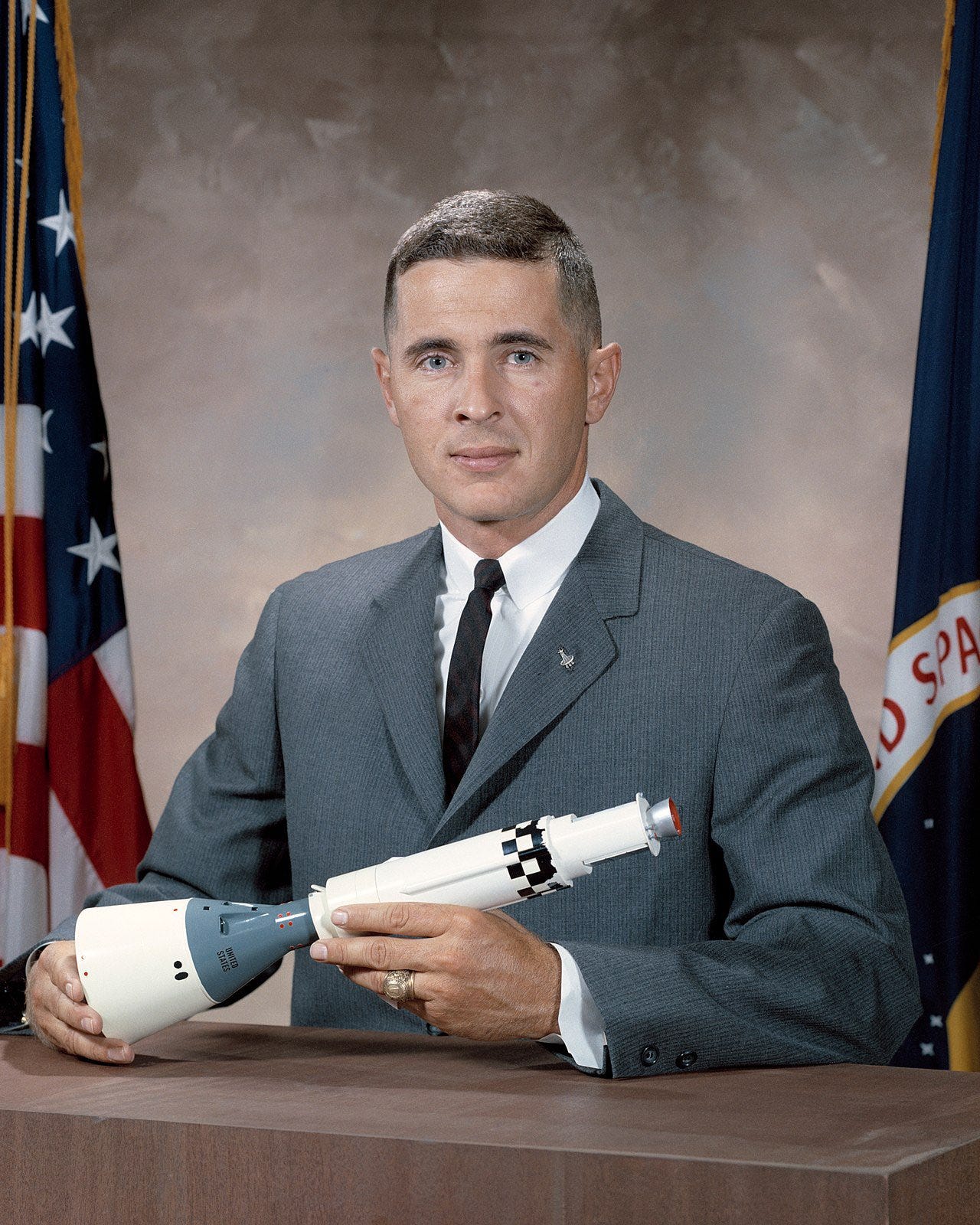“Here we came all the way to the moon to discover Earth.” - retired astronaut Bill Anders, 1933 - 2024
As you almost assuredly know, retired NASA Apollo astronaut Bill Anders died at age 90 on Friday when the Beechcraft T-34 he was flying plunged into the Pacific in Washington State.
There are countless things to say about Anders’ heroic life and his main gift to humanity - the first “Earthrise” images of our home planet as seen rising above the bleak surface of the Moon. (one black and white, two color). Just Google away for some fine testimonials and obituaries. Here’s the Flight Safety Folundation’s Aviation Safety Network page tracking the crash investigation.
But here I’m focusing on that inspiring and sobering vantage point he and NASA gave us on December 24, 1968. The video leading this post is taken from a wonderful longer visual explainer of how the photographs came to be, built on the research of my college classmate and friend Andy Chaikin, a historian and writer best known for his landmark book, “A Man on the Moon - the Voyages of the Apollo Astronauts.” Here’s the full video:
While their mission didn’t include landing, it’s clear that the landmark aspect of their view of Earth was evident to Anders, who was the lunar module pilot, along with Apollo 8 commander Frank Borman and command module pilot James Lovell. You can learn in the video how they all contributed to capturing these vistas in a bit of a friendly, but urgent, scramble.
In a 2015 interview for Forbes by my adventure-loving journalist friend Jimmy Clash, Anders offered this reflection on his photograph:
The view points out the beauty of Earth, and its fragility. It helped kick start the environmental movement. That little atmospheric thing you and I enjoy is nothing more than the skin on an apple. It's curious to me that the press and people on the ground have kind of forgotten our history-making voyage, and what's symbolic of the flight now is the “Earthrise” picture. Here we came all the way to the moon to discover Earth.
A powerful “Earthset” from Japan’s space effort
I think there’s far less appreciation of the power of the first video views of an Earthrise and Earthset, recorded in November 2007 by a special high-definition camera developed by Japan’s NHK broadcasting company and sent to orbit the Moon on the Kaguya satellite by the Japan Aerospace Exploration Agency, JAXA. The music is by my friend and onetime Uncle Wade bandmate Peter Rundquist.
I find the “Earthset” particularly evocative, because it leaves us with the view of the sterility of the lunar surface and after marveling at our living blue orb against the blackness of space.
I posted a low-resolution version of this video on my New York Times Dot Earth blog back in 2008. In that post I also included a sardonic cartoon by Marc Roberts, the illustrator and author of the “Throbgoblins” series, musing on how human behavior on the planet has a long way to go if we are to fully integrate the realities revealed in Earthrise.
P.S. - One detail worth noting: As JAXA explained when it released its images in 2007, none of these equivalents to a sunrise or sunset can actually be witnessed from the surface of the Moon:
We use the expression "Earth-rise" in this press release, but the Earth-rise is a phenomenon seen only from satellites that travel around the Moon, such as the KAGUYA and the Apollo space ship. The Earth-rise cannot be observed by a person who is on the Moon as they can always see the Earth at the same position.







![[BaubleSTRIP(MINI).jpg] [BaubleSTRIP(MINI).jpg]](https://substackcdn.com/image/fetch/$s_!71oB!,w_1456,c_limit,f_auto,q_auto:good,fl_progressive:steep/https%3A%2F%2Fsubstack-post-media.s3.amazonaws.com%2Fpublic%2Fimages%2Fd341eb37-8274-4ec2-95d0-6cadb4c17179_1121x393.jpeg)









Share this post